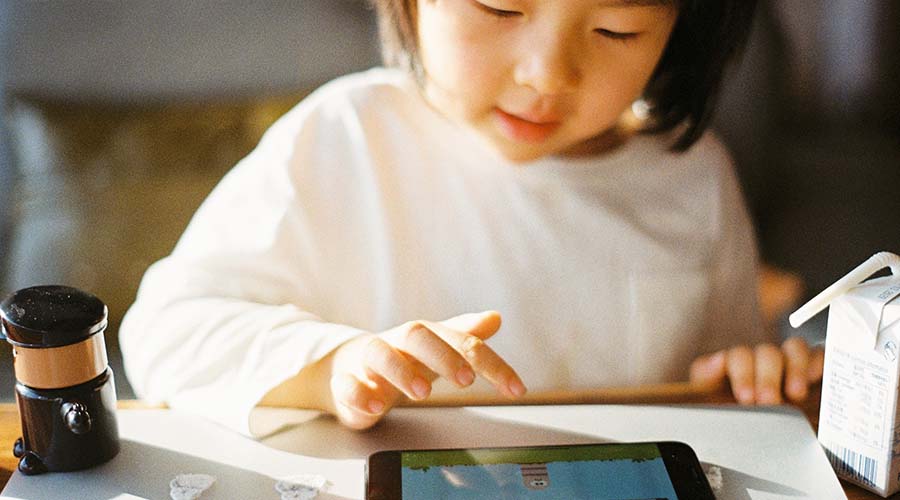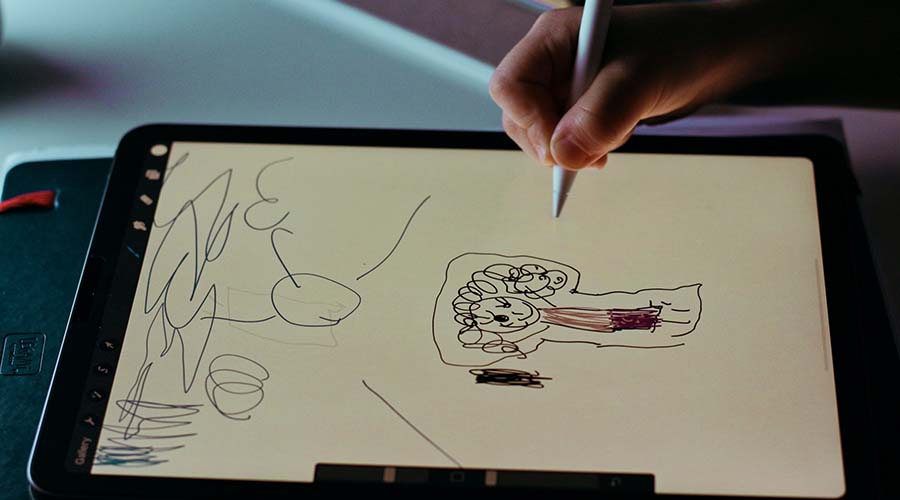settings
children
With Famly since
First of all, let’s address the elephant in the room: tech in the Early Years is a divisive topic.
People have really strong feelings about when and how children should access technology, especially tech that’s connected to the internet. There are specific pedagogies that avoid technology and there is a movement towards promoting ‘an unplugged childhood’. And, both parents and practitioners have understandable fears about safety when using technology.
But the thing is, as Early Years practitioners, we allow children to take risks.
We encourage them to use tools like hammers and saws. We support children to climb trees. We recognise the benefits of activities like building a fire and cooking something.
And why? Because teaching children to assess and manage the risks, while embracing the benefits and learning opportunities of something that might be risky, is the best way we can teach children how to access that activity or tool safely.
So why is it so different for technology?
Let's find out.
Making tech safe in the Early Years
Safeguarding children is always the highest priority in the Early Years sector. But that doesn't mean we try to eliminate all risk.
Just as with any activity or tool we incorporate into our learning environment, using technology in Early Years settings means taking measures to assess and mitigate what could go wrong.
Supervised use of technology as part of Early Years education means we can support children in developing the digital literacy skills to use tech safely, effectively, and moderately. And in this way, positively influence children's ideas and understanding of what digital devices are for.
For example,
- Teach young children about safe use of electricity, including risks around power strips, plugs, and sockets.
- Always keep batteries out of young children’s reach and talk to older children about how to use them, and dispose of them, safely.
- Ensure you have parental controls and 'safe search' enabled on your internet-ready devices. This is especially important if you’re using tablets or laptops for researching topics with children.
- Talk to children about being aware of what’s around them when using technology. We know screens can be captivating and lack of concentration on the environment around you can cause accidents.

Also, if you're using technology in your setting, have ongoing discussions with children about how to safely use technology. And even if you're not, plenty of the children you look after will have access to technology and the internet at home, and may not have such tight supervision. This is a great reason to include parents in these discussions too.
The NSPCC have some amazing resources , that you can share with families, to help you keep children safe with technology.
Most importantly though, children need to know they have a trusted adult they can confide in if they see something online that confuses or upsets them, be it you or their parents.
Removing the 'taboo' around tech can help because, if children feel like they might get into trouble for using a device when they weren’t supposed to, or for something they weren’t allowed to do, they mightn’t feel they can say if something goes wrong.
Embrace our changing world
Technology doesn’t have to just be a danger to be understood, or a risk to be mitigated. It plays a huge part in our society and in wider education.
In fact, as educators and childcare professionals, we often use technology to record child development and learning, in a digital learning journey, like Famly.
Technology is what allows us access to pretty well all the knowledge in the world and you can use this to support the learning of the children in your setting. For example, why not explore:
- How doctors use technology to help us get better
- How to research a topic online
- Mobility aids and assisted communication,
- Microscopes and telescopes
- Transport

Of course, a variety of resources in your enabling environment is essential, especially open-ended resources that encourage children to use their imagination to play with and use. But why not take a holistic approach and incorporate technology to enhance this provision?
Tim Lings, the Director of IT at Heronsgate Primary School, put it best when he said, “Children are interested in tech. In the Early Years, we say ‘You’re interested in trains? That’s fine.’ or ‘You’re interested in playing with sand? That’s great.’ But if you’re interested in playing with technology, we say ‘oh you can’t do that.’ Use of technology means following what children are interested in.”
The big ideas

Explore the possibilities
Incorporating digital technology and resources doesn’t mean being sedentary.
We spoke to Linda Baston-Pitt about the vital role of physical activity in the Early Years and she recommends making a physical activity policy, so everyone is on board with the importance of movement and getting enough exercise throughout the day.
For example, you could incorporate technology into your physical activity by:
- Using the clock app to time an obstacle course
- Listening to or monitoring heart-rate before then after running around
- Finding a new genre of music to dance to
- Recording some exercises for the children and parents to try together at home
And what's more, there are plenty of other ways to utilise technologies in early childhood education, to support children's learning. For example:
- Use a translation app to learn as a class to greet a new child into nursery, in their home language.
- Look up the name of a bird you saw in forest school and find out what it eats.
- Take photos of a plant as it grows, to see the progress over time.
- Check the weather and research how it’s monitored and predicted.
And using technology doesn’t just mean finding ways to use tablets or the internet.
Our friends at Little Barn Owls, in Sussex, use technology like light boxes and projectors, to explore light and shadow, and learn in new ways.

What’s perhaps even more important, is incorporating technology into your curriculum means you’re also teaching children and families when not to use it.
For example, if you’re working on sustainability, you can talk to children about switching lights off when you leave a room, or switching off an appliance when you’re not using it. You can demonstrate how going digital supports you to use less paper
Why not talk to parents and other adults about phone-free time, when no-one is looking at a screen? No, not even to check Famly.
And, you can discuss the importance of getting to sleep well, by not using tablets or phones right before bed, (just like we all definitely don't!)
Try learning journals for free
Add observations, and build digital learning journals to share with families instantly. All with your completely free 14-day trial.
Get started









